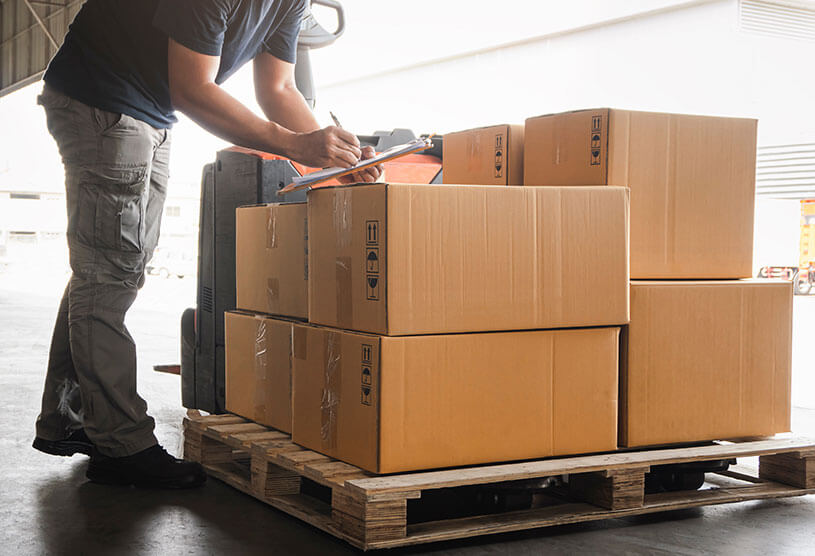From 31 January 2025 businesses importing goods from the European Union (EU) to Britain will need to comply with new UK safety and security declaration requirements.
Whether you’re already making import declarations or you’ll now need to start, here’s what’s changing and what you can do to prepare. Plus tips from HMRC’s Director of Customs Policy & Strategy, Alex Pienaar.
EU exports – what’s changing?
EU imports into Britain will now require safety and security declarations, as the waiver post-Brexit is coming to an end. You’ll need to complete a safety and security declaration before your import arrives.
This is a good thing for small businesses who regularly import into the UK as legitimate goods are less likely to be held up at the border. This means less disruption to your business, while also preventing illegal and dangerous goods from entering the country.
This new declaration form will be simpler than the ones used for imports from outside the EU (known as Rest of the World declaration). The new form will be easier to understand for businesses new to making import declarations, as well as more streamlined for businesses already making declarations.
There will be:
- 20 mandatory fields to complete
- 8 conditional fields which need to be completed in certain circumstances
- 9 optional fields which you can choose to leave blank
But it’s important that your declarations are accurately submitted by the legal deadline – which is before your goods arrive at the British border. If not, your goods risk being held up for unnecessary checks or penalties.
If your import information changes, you can amend your declaration up until your goods reach the border.
Will my business be affected?
You may already be voluntarily making EU import declarations. If so, you can continue to do so without change, or choose to switch to the new reduced dataset.
If you’re new to making import declarations, here’s what you need to know:
- the person responsible for filling out the declaration is the person who brings your goods into the country – such as the shipping company or hauler (though you’ll need to provide them with the right information)
- third parties (such as agents and intermediaries) can also submit the declaration on behalf of the carrier with their consent
If your goods are imported by rail, the rail freight operator is the person responsible for submitting the declarations.
If you import via air or sea, this will fall to the shipping company or airline.
For Roll On, Roll Off imports, it’s the responsibility of the haulage company for accompanied goods or the ferry operator for unaccompanied goods.
How to submit a safety and security declaration
You’ll need to make your safety and security declarations through the S&S GB IT platform.
If you currently import from outside of the EU and are already set up to submit declarations from ‘Rest of the World’, then you don’t have to make any changes to your systems.
Once your declaration has been accepted, you’ll be issued with a Movement Reference Number. Border Force will then complete a risk assessment of your declaration. If no further intervention is needed, your goods can continue on their journey to Britain.
How to prepare for the changes
HMRC’s Director of Customs Policy & Strategy, Alex Pienaar, has some tips on how to prepare to submit a safety and security declaration.
Step 1: talk to your supply chain
Talk to your supply chain to make sure you’re all agreed on who is responsible for submitting your declarations. Make sure whoever is responsible has all the information needed to complete the declaration.
Step 2: get the right software
There’s no user interface to use the S&S GB service, so you’ll need specialist software to make declarations. You can do this by:
- developing in-house software through the HMRC developer hub
- buying compatible software – there’s a list of developers available on the government website
- hiring a Community System provider
Step 3: register for safety and security declarations
You’ll need your Government Gateway account and password to get started. You’ll also need the relevant information about your business.
Step 4: make sure everything is working
Before you start making declarations, Alex suggests testing your software to make sure it’s set up correctly. HMRC has a testing environment you can use for this purpose.
Please note that if you already use software to make import declarations, you’ll need to check if it’s compatible with the new reduced data set requirement.
Find out more about safety and security declarations on the government website.
More import and export guides for small business
- How to apply for an EORI number: a guide for businesses
- What is a commodity code? Commodity code checker for businesses
- International shipping from UK: a guide for small businesses
- What type of business insurance do I need?
Ready to set up your cover?
As one of the UK’s biggest business insurance providers, we specialise in public liability insurance and protect more trades than anybody else. Why not take a look now and build a quick, tailored quote?
